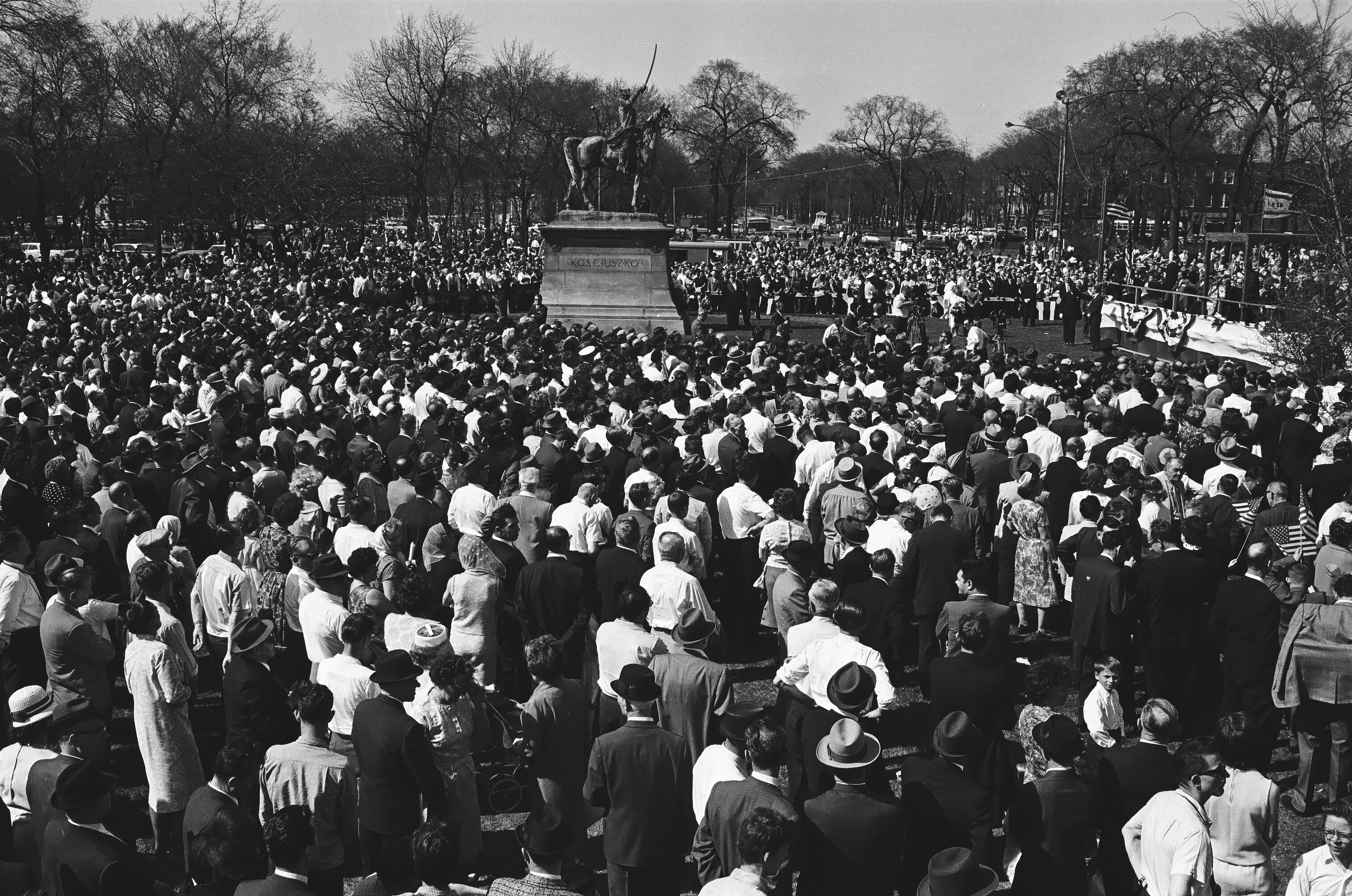For the first time in two years, the Polish Constitution Day Parade returns to downtown Chicago this Saturday, May 7, after being canceled and replaced by virtual events in the last two years due to the COVID-19 pandemic.
The parade has been around for more than a century. One of the first parades was held in Chicago in 1892. Each year the parade usually draws around 10,000 people and it is considered one of the largest Polish cultural events outside of Poland.
“It's a beautiful event whether you are Polish or not,” said Lucja Mirowska-Kopec, chairperson of the parade committee and president of the Alliance of Polish Clubs, which organizes the parade each year.
The parade marks the anniversary of the Polish constitution, which was adopted on May 3, 1791. That constitution, the first written constitution in Europe, recognized peasant rights under the law and religious tolerance. It was also an attempt to reform Poland’s political structure and strengthen Polish institutions in order to try to save Poland from neighbors Russia, Prussia and Austria, which continued to divide up the country through 1795.
The partition of Poland lasted for 123 years until Poland's sovereignty was restored in 1918.
In the Polish diaspora — particularly in cities like Chicago — the parade became an important symbol of a united Poland and Polish sovereignty.

This year the parade has a special focus: the war in Ukraine.
Mirowska-Kopec said the parade will feature an anti-war theme — freedom and peace for all — in solidarity with Ukraine and its current fight against Russia’s invasion.
She expects to see some floats not just dressed in white and red (the colors of the Polish flag), but also carrying the blue and yellow Ukrainian colors.
Ukraine and Poland have had a long and complex relationship, but today they share a mutual concern about Russia, according to Dominic Pacyga, professor emeritus of history at Columbia College.
“Today, Poland has embraced the Ukrainian struggle for independence,” Pacyga said.
Mark Dobrzycki, who served as vice chair of the parade and helped organize it for 19 years, said it is important for Polish Americans to show their support for Ukraine.
Poland was not only divided for 123 years in the late 1700s. It also experienced much of what Ukraine is living through right now during the Soviet and German occupation in World War ll — cities were bombed and destroyed, families were displaced and millions of Poles were killed.
“We can empathize with [the Ukrainian people],” Dobrzycki said. “And it's great to know that the Polish people of Chicago recognize that and show that they can help others and show others the importance of freedom and democracy.”
A tradition that goes back more than a century
There are accounts of a Polish Constitution Day Parade that took place on the South Side by the steel mills in 1884, according to Pacyga. But the first official parade was organized in 1892 and it became a yearly tradition around 1913, according to Dobrzycki.
Back then, the floats and the marching bands used to depart from the parking lot of Holy Trinity Church on Division Street on the North Side following mass, Dobrzycki said. From there, it went westbound all the way to Humboldt Park, where it ended with a picnic. This area was once home to many Polish Americans before many families moved to the suburbs.
The parade eventually moved downtown in the mid-1970s.
Dobrzyck, whose family immigrated from Poland several years after World War II, has been going to the parade for many years. He was about 7 years old when he went to his first parade. He was in it as a Polish scout in uniform, later as part of the teen club, and as a college student.
"This tradition is extremely important to my family,” Dobrzycki said. “It brings a sense of belonging, a sense of oneness and a sense of family.”

“Everybody was required to go,” Mirowska-Kopec said. “The schools were required to go, the school children, all the factories, all the businesses. People went there, but it wasn't because they wanted to show their acceptance of what was going on.”
The first time she attended a Polish parade in Chicago, Mirowska-Kopec was overwhelmed to see that people actually wanted to be there.
“I saw people who were showing their connection with the old country,” she said. “They were like second, third generation, they don't even speak Polish, but they still identify themselves with the Polish culture and traditions … people didn't forget where they're from.”
For the last few weeks, Mirowska-Kopec has been busy coordinating more than 150 Polish clubs and associations that want to be represented in the parade. And she is glad that so many members of the Polish community here will be there to show their support for Ukraine.
“Celebrating all those patriotic movements and events is very important to all of us,” Mirowska-Kopec said.
Polish Constitution Day Parade
Saturday May 7th
Columbus Dr. from Balbo St. to Monroe St.
Start Time: 11:30am
This story was inspired by a question we received about the history of the Polish Constitution Day Parade in Chicago.
Adriana Cardona-Maguigad is Curious City’s reporter. Follow her @AdrianaCardMag



